10+ Best Woodworking Books (For Beginners & Pros!)
Woodworking has been around for centuries and there are so many techniques and methods that it can be easy to miss some.
There are tons of great woodworking books out there, but I’ve condensed them down into the 10 best woodworking books for both beginners and professionals looking to take their projects to the next level. Let’s dig in!
1. The Complete Book of Woodworking
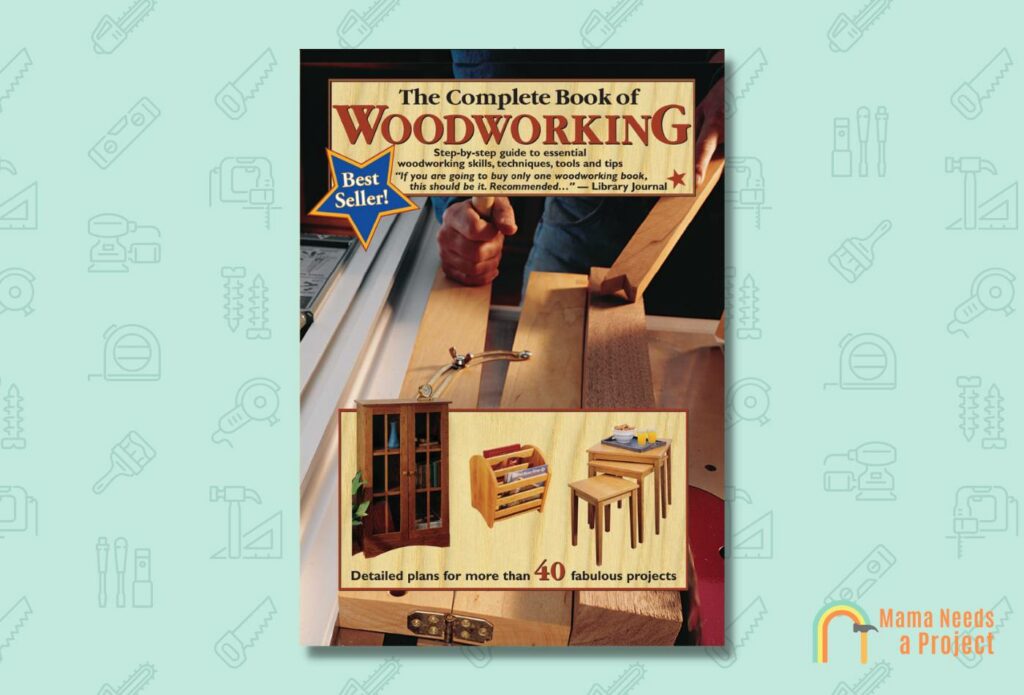
Whether you’re a woodworking amateur or someone who’s been doing it for years, you can still benefit from reading this comprehensive woodworking guide.
In this book—written by Tom Carpenter and Mark Johanson—40 woodworking projects are explained in detail. You’ll learn how to make a range of high-quality indoor and outdoor furnishings.
Each project includes a materials list along with step-by-step instructions. But the most helpful elements are the diagrams and pictures; they make the written instructions easy to understand and implement.
And if you want to get familiar with a wider variety of woodworking tools, this is the book for you.
Additionally, this book explains how to make jigs and joints, and how to properly apply finishes is addressed as well.
Why I Love this Book
If you want to learn more about woodworking fundamentals and time-tested techniques, this book is worth reading. Judging by the large amount of photos included, it’s no exaggeration to say every stage of the process is photographed for each project which I’m a huge fan of.
2. The Essential Woodworker
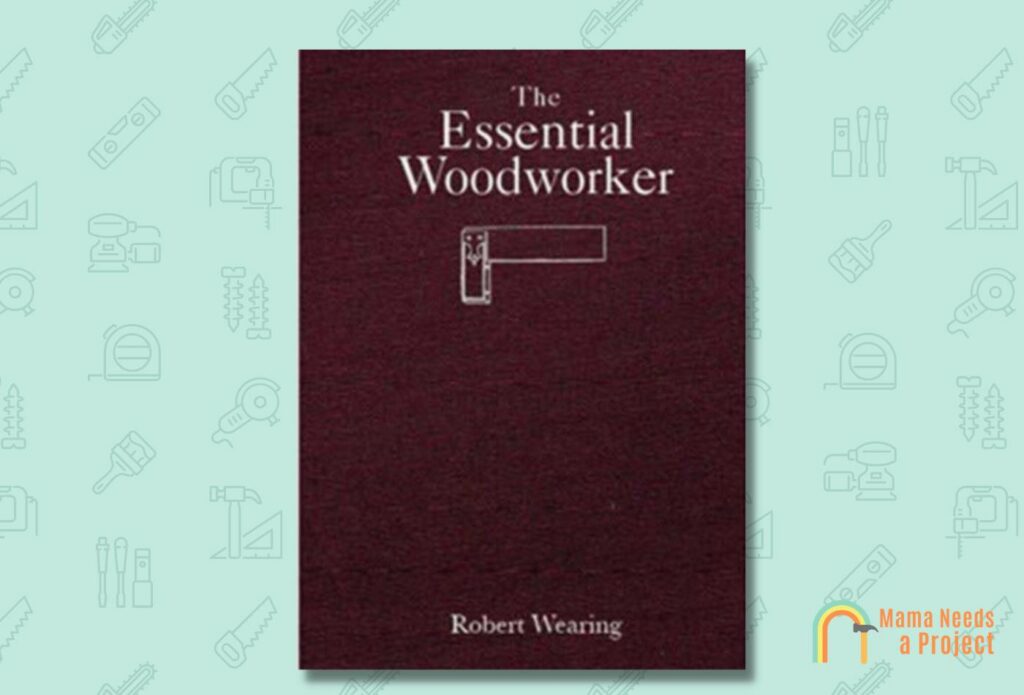
Another classic, “The Essential Woodworker” deals with the skills and techniques that are essential for any woodworkers. Robert Wearing uses the example of a dining table to intricately show all that’s needed to make this piece of furniture.
He explains how essential tools are used, which sawing techniques are worthwhile, and how planing should be handled.
Along with giving direct instruction, Wearing explains how woodworkers of all stripes can develop the skills necessary to be successful, and he even discusses non-woodworking techniques that can used to hone your skills.
And since this is an older book, it includes hand-drawn illustrations—500 to be exact!
Why I Love this Book
This book is great because it focuses on the skills you must develop in order to become an expert woodworker. It addresses what you can do while woodworking to improve your craft. This book also underscores the importance of patience and repetition, which I can attest to.
In short, this is another excellent book that deals with the fundamentals and the material is relevant, useful, and time-tested.
3. The Woodbook: The Complete Plates
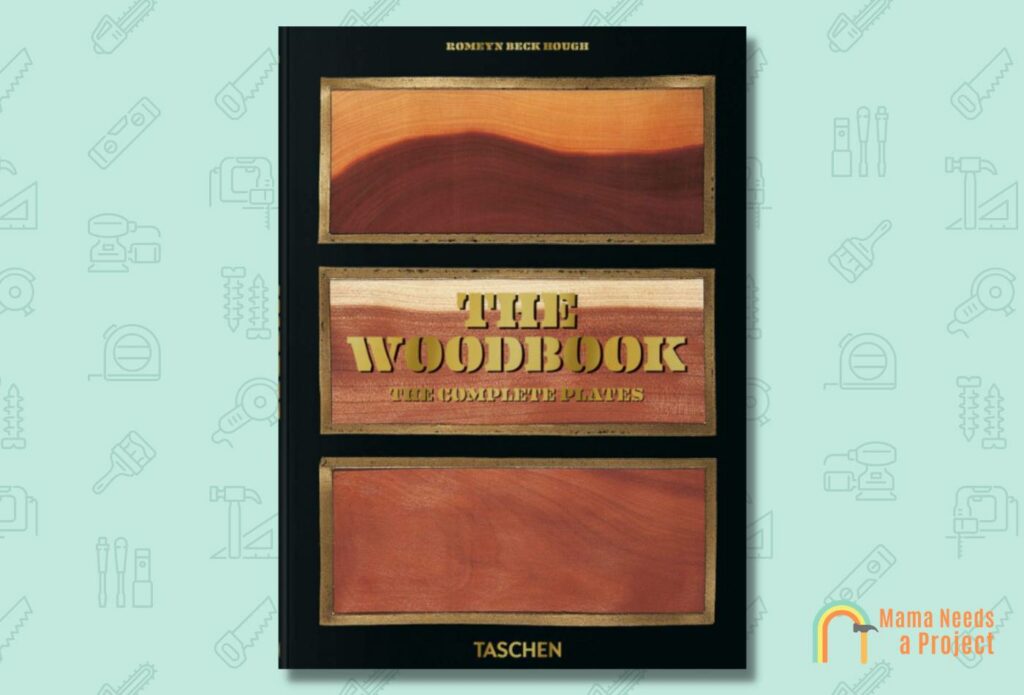
If you’re interested in learning more about the types of wood, this is one of the best woodworking books to consider.
The first volume of this book was published in 1888 by Romeyn Beck Hough, and the last one was published in 1913.
The woods are arranged in alphabetical order, and each wood has a radial, horizontal, and tangential cut so you can see and feel the wood.
These books also explain where different woods come from, and the physical characteristics of each wood are discussed at length so you can better understand which types of wood you should use.
Why I Love this Book
Reading these books are beneficial so you can gain a deep understanding of a range of woods, and which you should use on your projects.
4. Bill Hylton’s Power-Tool Joinery
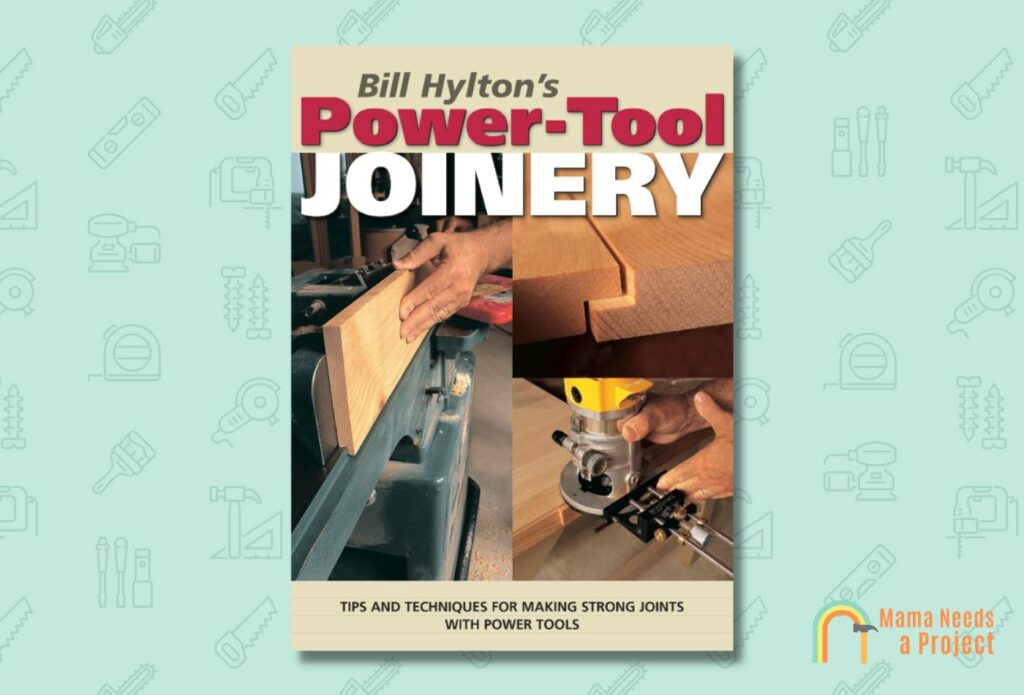
This is a must-read if you want to learn the art of joinery. This book also discusses how jigs and fixtures can be used to assist in the cutting of joints, which I’ve found extremely useful.
Whether you’re a joint-cutting amateur or a joinery expert, you’ll find a ton of value in reading this book.
Why I Love this Book
Knowing the ins and outs of joinery methods is important if for any woodworker. This book covers the ins and outs of this art in an easy to understand fashion so anyone can get started.
Whether you make joints the traditional way or use power tools, this joint book will help you with your joint making. There are plenty of in-depth descriptions alongside extremely helpful pictures, which is all you can really ask for when it comes to a joint-making guide.
5. Good Clean Fun: Misadventures in Sawdust at Offerman Woodshop

If you want a comical yet informative book that gives insight into what it’s like to spend decades in a workshop, read this book by Parks and Rec star Nick Offerman.
In this book, Offerman covers a range of popular woodworking projects while discussing his own woodworking journey giving you inspiration along the way.
I found this book is especially useful for young woodworkers who are just starting out, as it presents tons of useful wood shop tips and tricks in a digestible, humorous way that’s perfect for younger audiences.
And on a technical level, Offerman also shows he knows his stuff, so there’s a thing or two woodworking veterans can learn from reading this book as well.
Why I Love this Book
This book’s value comes from its ability to convey important points regarding the fundamentals of woodworking in a informative yet humorous way. It makes learning the woodworking fundamentals possible for anyone, young or old, who want to start learning this rewarding craft.
6. The Complete Manual Of Woodworking: A Detailed Guide To Design, Techniques, And Tools
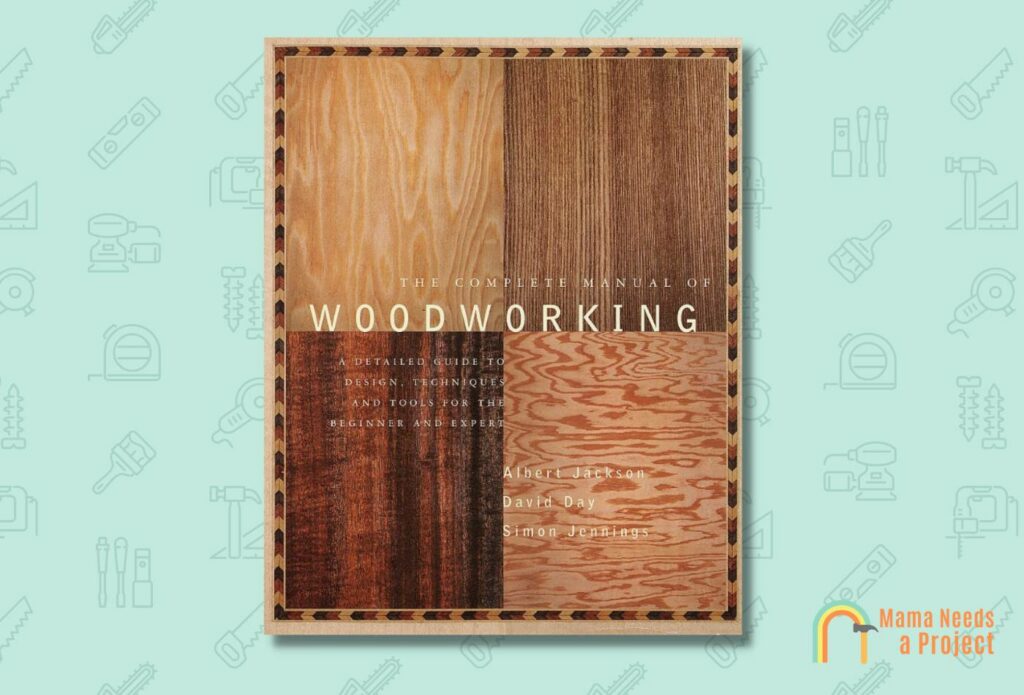
“The Complete Manual of Woodworking: A Detailed Guide to Design, Techniques, and Tools” is another comprehensive woodworking guide that I love.
This book covers the ins and outs of working with both hardwoods in softwoods which I found extremely helpful as a novice woodworker.
There’s also a discussion on how to properly use hand and power tools, as well as information on jointing, bonding, laminating, fastening, and much more – which I found useful.
Why I Love this Book
This book is full of helpful descriptions, infographics and high-quality pictures. Plus the writing is straightforward and easy to understand for anyone.
7. Working Wood 1 & 2: The Artisan Course With Paul Sellers

In this book, Paul Sellers uses his 40+ years of experience to easily explain methods and techniques commonly used in woodworking. There are over 800 color photos, plenty of illustrations, and many diagrams in this book that’s easy to read and comprehend.
He also goes over how to use a wide range of hand tools, and this information is especially helpful to young woodworkers who are just starting out.
Why I Love this Book
Another detailed starter guide, this one is written by a famous woodworking master, so if you want to be sure there’s authority behind the words you’re reading, pick up this book. You won’t regret it!
8. Great Book Of Woodworking Tips
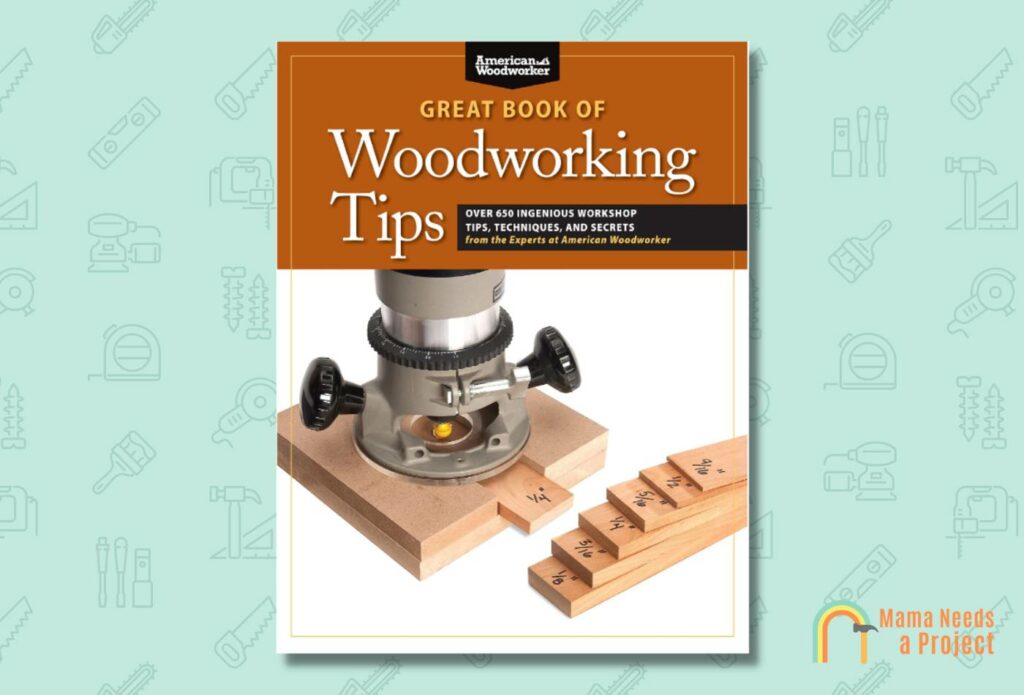
Looking for a book full of woodworking techniques, methods, and tips? Then you need to pick up the Great Book Of Woodworking Tips. Here are just a few of the things covered:
- How to rout
- How to fit edge joints
- How to sharpen blades and bits
- How to work with 4×8 sheets
- How to make drawer slides
- How to plane to thickness
- How to glue and clamp awkward miters
- How to flatten warped wood
This is an amazingly well-rounded book that’s great for amateur woodworkers looking to learn the ropes.
Why I Love this Book
Because this is a collection of insights from different woodworkers, you can be sure you’re getting a variety of perspectives when you read this book. It offers so many tips and tricks that I’ve used over the years so I know how helpful it is.
9. Understanding Wood Finishing
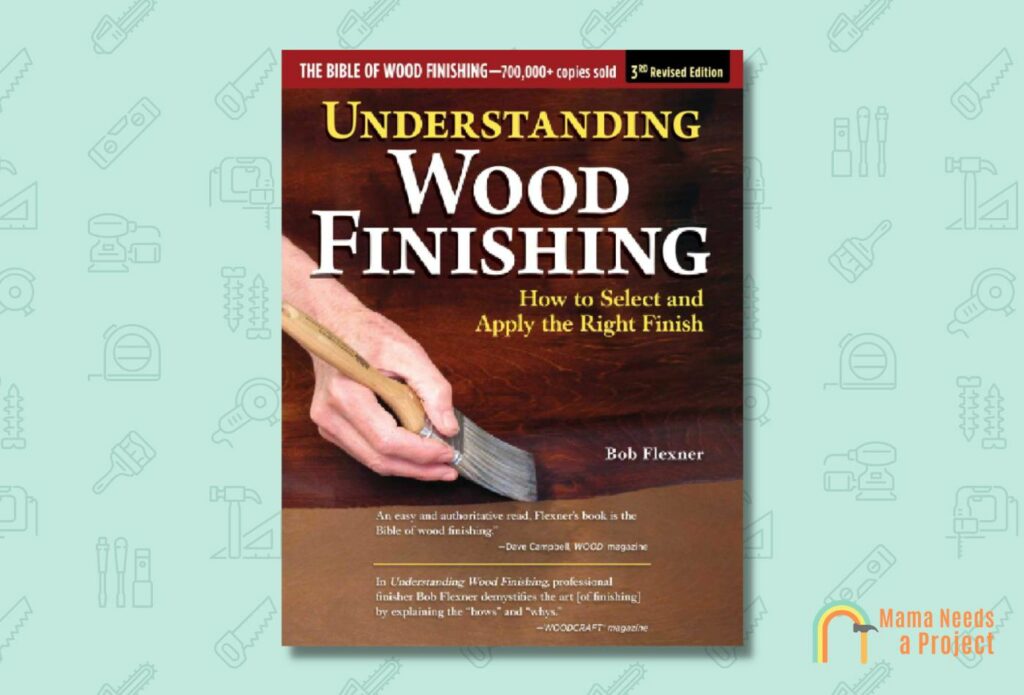
As the title implies, this book covers the ins and outs of finishing your wood projects. This book isn’t all that old, yet it’s often referred to as the bible for wood finishing, which speaks to its quality.
It puts forward plenty of up-to-date information, over 300 useful photos, detailed instructions and explanations, and bedrock information that you should know if you like to apply finish to your wood projects.
Why I Love this Book
What’s great about this book is it covers the subject of wood finishing so in-depth. Where other books might only have one chapter dedicated to it, this entire book is packed with wood finishing tips and tricks.
10. The Workbench Design Book
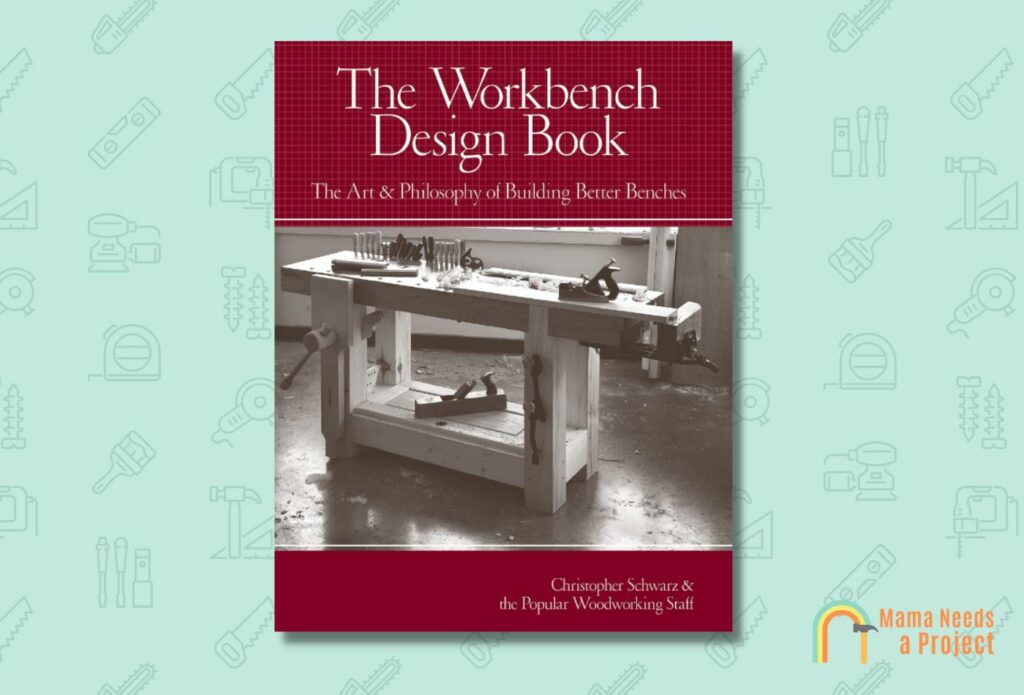
Looking to build a workbench for your shop? This book mainly focuses on how to set up a modern workbench that’ll allow you to execute a range of woodworking tasks.
It also covers some woodworking fundamentals, and it’s particularly useful for somebody who’s going to be working in a home wood shop.
Why I Love this Book
If you like learning about processes and you want to have the best possible setup when you’re woodworking, read this book to know how to set up an effective workbench along with a first-rate wood shop. It’s great at teaching you the proper workbench height you should use and more.
Final Thoughts
The good news is that there’s no shortage of reading material to become a better woodworker!
And if you read both modern and decades-old material, you’ll see that the fundamental woodworking principles haven’t changed, and age-old techniques are still totally useful today.
So if you want to improve your woodworking in a variety of ways, read the books above when you’ve got some free time away from the shop.

